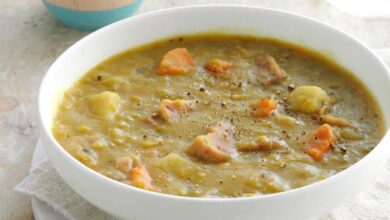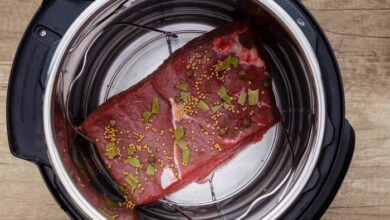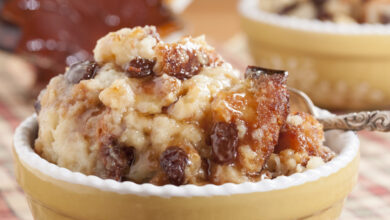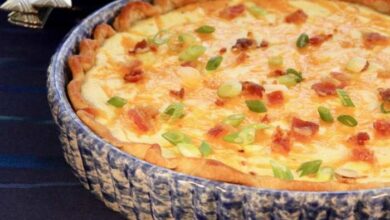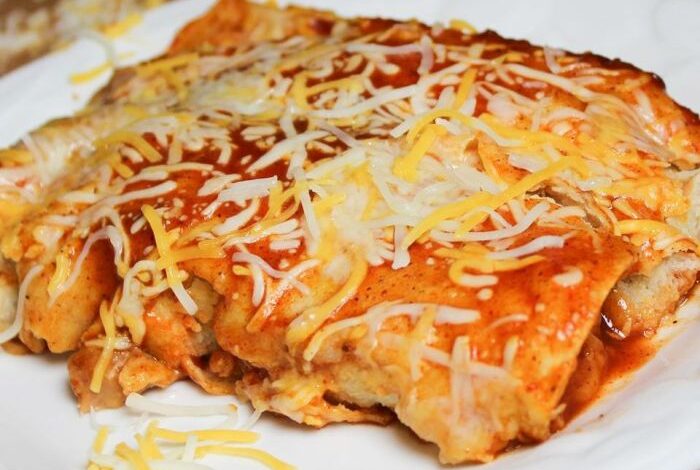
Refried Bean and Cheese Enchiladas: A Culinary Journey
Refried bean and cheese enchiladas are a beloved dish in Mexican cuisine, a testament to the rich culinary heritage of the region. This simple yet satisfying meal has captured hearts and stomachs for generations, its origins intertwined with the history and culture of Mexico.
From the humble beginnings of corn tortillas and flavorful beans to the artful layering of cheese and savory sauces, the journey of refried bean and cheese enchiladas is a fascinating one. We’ll delve into the history, ingredients, variations, and cultural significance of this iconic dish, exploring the culinary techniques and presentation that make it so special.
History and Origins
Refried beans and cheese enchiladas are a beloved dish in Mexican cuisine, but their history is a rich tapestry woven from diverse cultural influences and culinary innovations. Understanding the origins of this dish provides insight into the evolution of Mexican food and its enduring appeal.
Culinary Influences
The origins of refried beans and cheese enchiladas can be traced back to pre-Hispanic Mexico. Indigenous cultures in Mesoamerica had long cultivated beans and corn, and their culinary traditions played a crucial role in shaping the dish. The Aztecs, for instance, developed a technique for drying and grinding corn into masa, which is used to make tortillas.
- Corn tortillas: These flatbreads were a staple in the Aztec diet, and their use as a wrapper for fillings was a common practice.
- Beans: Beans were a significant source of protein and fiber, and they were often cooked and mashed into a paste, similar to modern refried beans.
- Chiles: Indigenous cultures in Mesoamerica had a wide array of chiles, which they used to add flavor and heat to their dishes.
When the Spanish arrived in Mexico in the 16th century, they introduced new ingredients and culinary techniques. These included cheese, which became a popular addition to enchiladas.
Evolution of the Recipe
Over time, the recipe for refried beans and cheese enchiladas evolved.
- Refried beans: The process of refrying beans, or “frijoles refritos,” became a common practice in Mexican cuisine. This technique involved cooking beans in lard or oil until they were soft and creamy, adding a rich flavor and texture.
- Cheese: The use of cheese in enchiladas became increasingly common, with various types, such as queso fresco or Oaxaca cheese, being incorporated. The cheese added a creamy and salty element to the dish.
- Sauces: Enchiladas were often topped with various sauces, including tomato-based salsas, mole sauces, or chile-based sauces, further enhancing their flavor and complexity.
Ingredients and Preparation
Refried beans and cheese enchiladas are a classic comfort food that’s easy to make at home. The key to a successful dish is using quality ingredients and taking the time to properly prepare each component.
Refried Beans
Refried beans are the foundation of this dish, and they’re surprisingly simple to make from scratch.
- Start with dried pinto beans, which are readily available and offer a rich, earthy flavor.
- Soak the beans overnight in plenty of water to soften them and reduce cooking time.
- The next day, drain the beans and rinse them before adding them to a pot with fresh water and a pinch of salt.
- Bring the pot to a boil, then reduce heat and simmer until the beans are tender, about 1-2 hours.
- Once cooked, drain the beans, reserving some of the cooking liquid.
- Using a potato masher or food processor, mash the beans until they’re smooth and creamy.
- Add a bit of the reserved cooking liquid, along with salt, pepper, and a touch of cumin, to achieve the desired consistency and flavor.
- For a richer flavor, you can sauté some diced onions and garlic in a pan before adding the mashed beans.
Cheese Filling
The cheese filling is the heart of the enchiladas.
- Use a blend of melting cheeses, such as Monterey Jack, cheddar, and queso quesadilla, for a gooey and flavorful filling.
- Grate the cheese finely to ensure it melts evenly.
- You can also add other ingredients to the cheese filling, such as chopped onions, cilantro, or jalapenos, for added flavor and texture.
Tortillas
The tortillas are the vessel for the filling, and they should be soft and pliable.
- Use corn tortillas, which are traditionally used for enchiladas and offer a distinct corn flavor.
- Warm the tortillas slightly in a dry skillet or microwave to make them more pliable and prevent them from cracking when rolled.
- To ensure the tortillas stay soft, you can dip them briefly in a warm sauce or broth before filling them.
Enchilada Sauce
The enchilada sauce adds a rich and savory depth to the dish.
- You can use a store-bought enchilada sauce, but making it from scratch is a rewarding experience and allows you to customize the flavor.
- Start with a base of diced onions, garlic, and chili powder.
- Sauté the onions and garlic in a pan until softened, then add the chili powder and cook for a few minutes to release its aroma.
- Add tomato paste, tomato sauce, and chicken broth to the pan, and simmer until the sauce thickens.
- Season the sauce with salt, pepper, cumin, and oregano to taste.
- For a spicier sauce, add a pinch of cayenne pepper or chipotle powder.
Assembly and Baking
Once you’ve prepared all the components, it’s time to assemble the enchiladas.
Refried bean and cheese enchiladas are a classic comfort food, but sometimes you crave something a little more adventurous. For a change of pace, I recently tried Chef John’s Yucatan-style grilled pork, which is a recipe that takes inspiration from the vibrant flavors of Mexico.
Chef John’s Yucatan style grilled pork is a great example of how simple ingredients can be transformed into a delicious dish. And when I’m craving something warm and familiar, I’ll always go back to those cheesy enchiladas.
- Spread a thin layer of refried beans in the bottom of a baking dish.
- Fill each tortilla with a generous amount of cheese filling, then roll it up tightly.
- Place the rolled enchiladas seam-side down in the baking dish, side by side.
- Pour the enchilada sauce over the enchiladas, making sure they’re completely coated.
- Top the enchiladas with shredded cheese, then bake in a preheated oven until the cheese is melted and bubbly, and the sauce is bubbling.
Variations and Regional Differences
While the basic concept of refried beans and cheese nestled in a corn tortilla is a constant, regional variations across Mexico and the United States have resulted in unique twists on this classic dish. These variations often reflect the local ingredients, cooking traditions, and culinary preferences of each region.
Refried bean and cheese enchiladas are a classic comfort food, but sometimes you crave something a little smokier. That’s when I turn to my trusty smoker and try a recipe like bobs pulled pork on a smoker. The smoky flavor and tender texture are just what I need to switch things up.
And when I’m craving something cheesy and comforting, I can always count on those enchiladas to hit the spot.
Regional Ingredients and Cooking Styles
The ingredients and cooking styles used to prepare refried bean and cheese enchiladas vary significantly from region to region.
- Northern Mexico:In the north, where a strong Spanish influence is present, enchiladas are often made with a red chile sauce and a filling of shredded chicken or beef, along with the traditional refried beans and cheese. This style of enchilada is known as “enchiladas rojas” (red enchiladas).
- Central Mexico:The central region of Mexico is known for its use of a variety of green chiles in its cuisine. Enchiladas in this region are often made with a green chile sauce and filled with a combination of refried beans, cheese, and sometimes potatoes.
- Southern Mexico:In the south, enchiladas are often made with a mole sauce, which is a complex and flavorful sauce made with a variety of ingredients, including chocolate, spices, and nuts. The enchiladas are often filled with a mixture of refried beans, cheese, and meat, such as chicken or pork.
Unique Characteristics of Each Variation
The unique characteristics of each regional variation of refried bean and cheese enchiladas are a result of the specific ingredients and cooking styles used in each region.
- Northern Mexico:The use of red chile sauce in northern Mexico enchiladas gives them a bold, spicy flavor. The shredded chicken or beef adds a savory element to the dish.
- Central Mexico:Green chile sauces used in central Mexico enchiladas often have a milder flavor than red chile sauces.
The addition of potatoes adds a hearty texture to the dish.
- Southern Mexico:The use of mole sauce in southern Mexico enchiladas gives them a rich, complex flavor. The combination of refried beans, cheese, and meat creates a satisfyingly filling dish.
Nutritional Value and Health Considerations
Refried beans and cheese enchiladas are a popular Mexican dish that can be a delicious and satisfying meal. However, like many other dishes, it’s important to consider its nutritional value and potential health implications. This section will delve into the nutritional profile of refried bean and cheese enchiladas, exploring both its potential benefits and drawbacks.
We’ll also discuss dietary recommendations and modifications to make this dish healthier.
Nutritional Content
Refried bean and cheese enchiladas offer a combination of macronutrients, including carbohydrates, protein, and fat. The exact nutritional content can vary depending on the ingredients and preparation method. Here’s a general breakdown of the nutritional profile:* Carbohydrates:Primarily from corn tortillas and beans.
Corn tortillas are a good source of complex carbohydrates, while beans provide fiber, which can help regulate blood sugar levels.
Protein
Refried bean and cheese enchiladas are a classic comfort food, perfect for a cozy night in. While I love the hearty flavors of the enchiladas, sometimes I crave something lighter and refreshing, like a peanut butter banana smoothie.
The creamy texture and sweet taste of the smoothie are a great contrast to the savory enchiladas, making for a satisfying meal. And, of course, nothing beats a warm plate of enchiladas on a chilly evening.
Mainly from beans and cheese. Beans are a good source of plant-based protein, while cheese provides animal protein.
Fat
The primary sources of fat are cheese and the cooking oil used for frying. The type of cheese and oil used can significantly impact the fat content and type of fat.
Other nutrients
Refried bean and cheese enchiladas can also provide essential vitamins and minerals, including iron, calcium, folate, and potassium. However, the amount of these nutrients can vary depending on the ingredients and preparation methods.
Potential Health Benefits
Refried bean and cheese enchiladas can offer some potential health benefits, especially when made with healthier ingredients and preparation methods. * Fiber:The beans in enchiladas are a good source of dietary fiber, which is crucial for digestive health. Fiber can help regulate bowel movements, lower cholesterol levels, and control blood sugar levels.
Protein
Both beans and cheese provide protein, which is essential for building and repairing tissues, maintaining muscle mass, and supporting immune function.
Calcium
Cheese is a good source of calcium, which is essential for strong bones and teeth.
Iron
Beans are a good source of iron, which is essential for carrying oxygen throughout the body.
Potential Health Drawbacks
While refried bean and cheese enchiladas can offer some health benefits, they can also have some potential drawbacks, particularly when prepared with unhealthy ingredients and cooking methods. * High in Calories and Fat:Enchiladas can be high in calories and fat, especially if they are deep-fried or made with high-fat cheese.
This can contribute to weight gain and an increased risk of heart disease.
Sodium
The cheese and seasonings used in enchiladas can be high in sodium. High sodium intake can increase blood pressure and contribute to heart disease.
Saturated Fat
Cheese and cooking oil can contribute to saturated fat intake, which can raise cholesterol levels and increase the risk of heart disease.
Dietary Recommendations and Modifications
To make refried bean and cheese enchiladas a healthier option, consider these dietary recommendations and modifications:* Choose leaner meats:Opt for leaner meats like chicken or turkey instead of ground beef.
Use low-fat cheese
Select low-fat or reduced-fat cheese varieties to lower the fat and calorie content.
Use whole-wheat tortillas
Whole-wheat tortillas provide more fiber and nutrients than white tortillas.
Reduce the amount of cheese
Instead of layering cheese heavily, use a moderate amount to reduce the fat and calorie content.
Bake instead of frying
Baking the enchiladas instead of frying them will significantly reduce the fat content.
Add vegetables
Include a variety of vegetables, such as onions, peppers, and tomatoes, to add flavor and nutrients.
Use a healthier cooking oil
Opt for heart-healthy oils like olive oil or avocado oil for cooking.
Watch your portion size
Enjoy a moderate portion size to manage calorie intake.By making these modifications, you can enjoy the delicious flavors of refried bean and cheese enchiladas while reducing their potential health drawbacks.
Cultural Significance and Social Context: Refried Bean And Cheese Enchiladas
Refried bean and cheese enchiladas hold a special place in Mexican culture, transcending their status as a simple dish to become a symbol of tradition, family, and celebration. They are more than just a culinary creation; they are a testament to the rich heritage and vibrant social fabric of Mexico.
Social Gatherings and Celebrations
Refried bean and cheese enchiladas are a staple at numerous social gatherings and celebrations in Mexico. From casual family meals to grand fiestas, they are a dish that brings people together, fostering a sense of community and shared experience.
- Family Meals:Enchiladas are a common sight on Mexican dinner tables, serving as a comforting and satisfying meal for families to enjoy together. They are often prepared on special occasions, such as birthdays, anniversaries, and holidays, adding a special touch to the festivities.
- Fiestas and Celebrations:Enchiladas are a popular choice for large gatherings, such as weddings, baptisms, and quinceañeras. Their generous portions and crowd-pleasing flavors make them an ideal dish for sharing with friends and family.
- Community Events:Enchiladas are often served at community events, such as church gatherings, school fundraisers, and cultural festivals. They provide a sense of unity and shared tradition, bringing people together over a delicious and familiar meal.
Culinary Techniques and Presentation
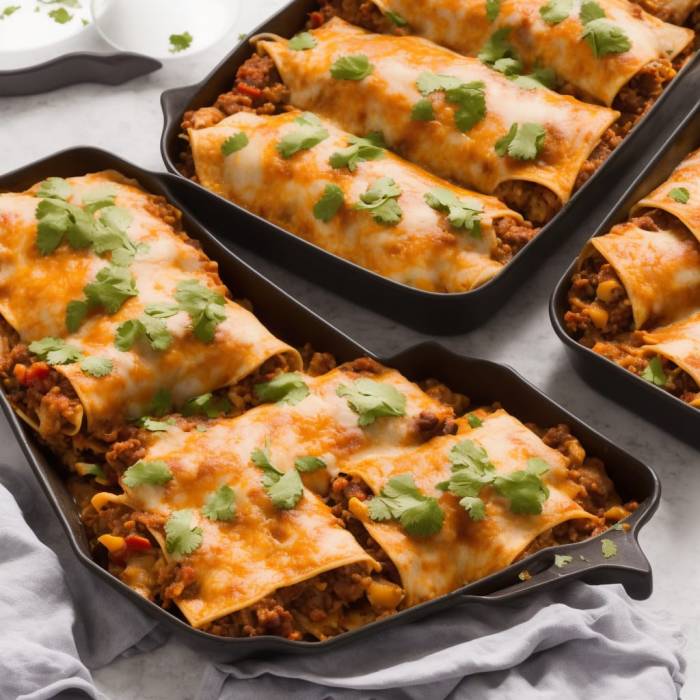
The art of making enchiladas lies in the meticulous preparation of the sauce, the skillful assembly of the filling, and the visually appealing presentation. Mastering these techniques elevates the dish from a simple meal to a culinary masterpiece.
Enchilada Sauce Preparation Methods
Enchilada sauce is the heart and soul of the dish, infusing it with flavor and richness. There are numerous methods for preparing this vital component, each offering unique characteristics and complexity.
- Traditional Red Sauce:This classic sauce is made with a blend of dried chiles, often ancho or guajillo, simmered in a flavorful broth. The chiles are rehydrated, toasted, and then blended with spices, onions, garlic, and tomato paste for a vibrant, earthy flavor.
- Green Sauce:This vibrant green sauce is made with tomatillos, a tart fruit closely related to tomatoes, combined with jalapeños, cilantro, and other herbs. The sauce is often roasted for a smoky depth of flavor, resulting in a tangy, slightly spicy profile.
- Mole Sauce:Mole, a complex sauce native to Mexico, can be incorporated into enchiladas for an intensely flavorful experience. This sauce typically involves numerous ingredients, including chiles, spices, nuts, seeds, and chocolate, creating a rich, multi-layered flavor profile.
- Store-Bought Sauce:For a quick and convenient option, store-bought enchilada sauces are widely available. These sauces come in various flavors, from mild to spicy, offering a convenient alternative for busy cooks.
Assembling and Rolling Enchiladas
The process of assembling and rolling enchiladas is a delicate art, requiring precision and care to achieve perfect results.
- Preparing the Tortillas:The tortillas should be warmed slightly to make them pliable and easier to roll. They can be heated in a microwave, oven, or on a griddle.
- Spooning the Filling:The filling, typically refried beans and cheese, is carefully spooned onto the tortillas. The amount of filling should be sufficient to create a satisfyingly full enchilada without overfilling and causing the tortillas to break.
- Rolling Technique:The tortilla is gently rolled around the filling, ensuring a tight and even roll. Some cooks prefer to fold the sides of the tortilla inwards before rolling to prevent the filling from spilling out.
- Placement in the Baking Dish:The rolled enchiladas are placed side-by-side in a baking dish, ensuring that they are snugly packed to prevent them from unrolling during baking.
Presentation
The presentation of enchiladas is as important as their taste. A visually appealing dish can enhance the dining experience and create a lasting impression.
- Garnishes:A sprinkle of fresh cilantro, chopped onions, or a dollop of sour cream adds a touch of freshness and color to the dish.
- Serving Dish:A rustic casserole dish or a colorful ceramic plate can elevate the presentation and create a more appealing visual.
- Side Dishes:Accompanying the enchiladas with a vibrant side salad or a simple rice pilaf adds balance and complexity to the meal.
Serving Suggestions and Accompaniments

Refried bean and cheese enchiladas are a versatile dish that can be enjoyed in many different ways. They are typically served hot, but can also be enjoyed at room temperature. Accompaniments are a key part of the experience, adding flavor and texture to the dish.
Traditional and Modern Accompaniments, Refried bean and cheese enchiladas
Traditional accompaniments for refried bean and cheese enchiladas often reflect the dish’s Mexican roots. These include:
- Salsa:A variety of salsas, from mild to spicy, are commonly served with enchiladas. Salsa roja (red salsa), made with tomatoes, chiles, and onions, is a popular choice. Salsa verde (green salsa), made with tomatillos, chiles, and herbs, offers a tangy and slightly spicy flavor.
- Guacamole:This creamy avocado dip is a classic accompaniment to enchiladas, adding a rich and flavorful element.
- Sour Cream or Crema Fresca:A dollop of sour cream or crema fresca adds a tangy and creamy contrast to the richness of the enchiladas.
- Rice:White rice or Mexican rice is often served alongside enchiladas, providing a light and fluffy counterpoint to the hearty dish.
- Beans:Refried beans, pinto beans, or black beans can be served as a side dish or incorporated into the enchiladas themselves.
Modern accompaniments offer a wider range of flavors and textures, reflecting the growing popularity of fusion cuisine. These can include:
- Pico de Gallo:This fresh salsa, made with diced tomatoes, onions, cilantro, and lime juice, adds a bright and vibrant flavor to the enchiladas.
- Slaw:A light and crunchy slaw, made with shredded cabbage, carrots, and a tangy dressing, provides a refreshing contrast to the richness of the enchiladas.
- Avocado Crema:This creamy sauce, made with avocado, sour cream, and lime juice, offers a rich and flavorful twist on the classic crema fresca.
- Grilled Corn:Grilled corn on the cob, brushed with butter and seasoned with chili powder, adds a smoky and sweet flavor to the meal.
Ideal Temperature and Presentation
Refried bean and cheese enchiladas are best served hot, straight from the oven. The cheese should be melted and bubbly, and the tortillas should be soft and pliable. Enchiladas can be presented in a variety of ways. They can be served individually on plates, or arranged in a casserole dish.
A garnish of chopped cilantro, sliced onions, or a dollop of sour cream can add a touch of visual appeal.
Complementary Side Dish Recipe: Mexican Street Corn Salad
- Ingredients:
- 2 ears of corn, grilled or boiled
- 1/2 cup mayonnaise
- 1/4 cup crumbled cotija cheese
- 1/4 cup chopped cilantro
- 1 tablespoon lime juice
- 1 teaspoon chili powder
- 1/2 teaspoon cumin
- Salt and pepper to taste
- Instructions:
- Cut the corn kernels off the cob.
- In a large bowl, combine the corn kernels, mayonnaise, cotija cheese, cilantro, lime juice, chili powder, cumin, salt, and pepper.
- Mix well and serve immediately.
Recipe Development and Innovation
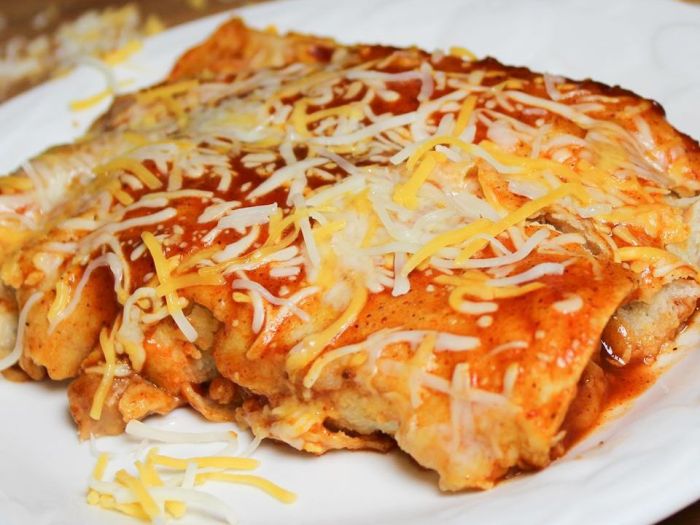
Refried bean and cheese enchiladas, a classic comfort food, offer a canvas for culinary creativity. While the traditional recipe is beloved, exploring new flavor profiles and techniques can elevate this dish to new heights. This section delves into innovative approaches to reinventing this beloved Mexican-American staple.
Innovative Ingredients and Cooking Techniques
The foundation of a successful enchilada lies in the quality of its ingredients. Experimenting with different types of beans, cheeses, and spices can significantly alter the flavor profile. For example, incorporating black beans instead of pinto beans adds a smoky, earthy dimension.
Similarly, using a blend of cheeses, such as Oaxaca and Monterey Jack, introduces a complex texture and flavor.
“A sprinkle of smoked paprika or chipotle powder can impart a subtle smoky heat, while a touch of cumin adds a warm, earthy note.”
Beyond ingredients, innovative cooking techniques can also enhance the enchilada experience. For instance, grilling the tortillas before filling them adds a smoky char and a slight crispness. Alternatively, pan-frying the enchiladas in a small amount of oil creates a golden-brown crust that adds depth to the flavor.

